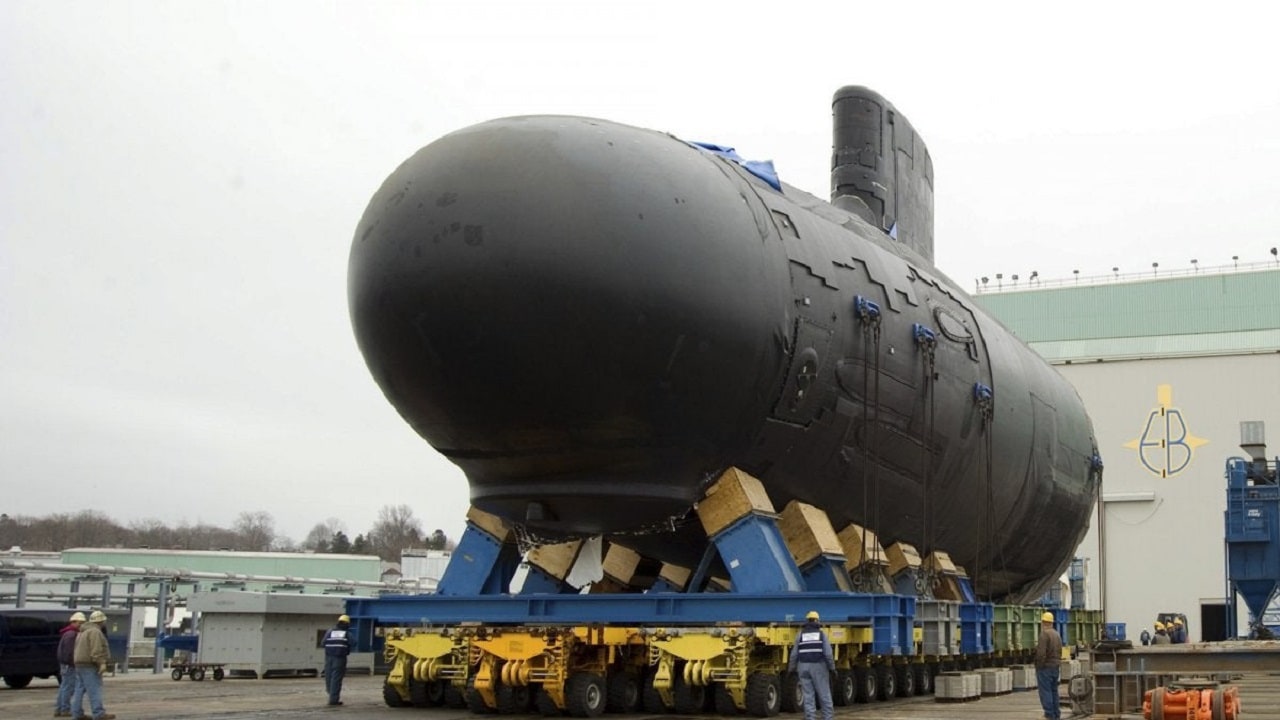What makes this submarine such a threat to nations like Russia and China? The U.S. Navy’s Block V Virginia-class attack submarines will become more lethal and potent. The Block V version is larger and has more weapons than the earlier Virginia-class upgrades. This means they are almost as big as the Ohio-class of ballistic missile submarines. Longer means more missile tubes and the Block V’s will have an estimated 76 percent more missile slots. These enhancements could create the most powerful sub in the U.S. fleet.
Block V Virginia-Class Submarines: More Missile Launch Tubes
The Block V subs boast the Virginia Payload Module (VPM), an 84-foot section of the submarine that will launch missiles. The VPM on the Block Vs has four new vertical launch tubes. Each of these can carry seven Tomahawks. Moreover, if new hypersonic missile technology is developed as planned, the Virginia-class’s larger launcher could fire a hypersonic weapon someday. This could come in 2028, according to the navy’s plan for hypersonic development.
Block V Virginia-Class Submarines: It’s a Big Contract
The navy will spend $24.1 billion on ten Block V’s from prime contractor General Dynamics Electric Boat working with Huntington Ingalls Industries’ Newport News Shipbuilding. The Block Vs could serve into the 2070s. The first Block V boat should come online in 2025.
Block V Virginia-Class Submarines: Advanced Torpedoes and Cruise Missiles
The submarines can launch Mark 48 ADCAP (Advanced Capability) heavyweight guided torpedoes and place Hammerhead mines. The boats can fire Tomahawk Block V land-attack and anti-ship cruise missiles, the latest version of the Tomahawk, which have the capability to change course and enable new target corrections in flight.
The Virginia-class subs are designed to be versatile with blue water duties and littoral coast missions such as eavesdropping for intelligence and inserting teams of Navy SEALs. The Virginia-class performs well close to shore with its advanced handling system.
Block V Virginia-Class Submarines: Quiet With Better Sonars
The Block Vs will be the quietest of the already low-acoustic signature of the Virginia-class. Unmanned underwater vehicles can be launched from the Block Vs as well.
The sonar systems will also be updated. Naval News had this to say about the new Block V sonars, “On the sonar front the Block Vs are expected to receive the Large Vertical Array (LVA) flank sonars. These are in addition to the six ultra-modern Light Weight Wide Aperture Arrays (LWWAA) which are placed along the submarine’s side.”
Block V Virginia-Class Submarines: How Does It Stack Up to the Russians?
The Block V can be compared to Russia’s Yasen-M nuclear-powered attack submarines. The Yasen-M specializes in launching cruise missiles.
The Yasen-M submarines have a displacement of 13,800 tons (more than the Block Vs) and can reach a speed of 35-knots. The Yasen-M also features updated electronics and a new KTP-6 reactor that is believed to be quieter than previous reactors.
The Russian nuclear-powered submarines are reported to be armed with SS-N-30A Sizzler and SS-N-26 Strobile cruise missiles. The YasenM has 32 vertical tubes. Additionally, the boats could be armed with the Tsirkon hypersonic missile.
The U.S. Navy Has Work to Do to Catch Up on Hypersonic Technology
Russia is leading the United States in submarine-launched hypersonic missiles. The Russians have already tested a Tsirkon hypersonic from a Yasen-M submarine last year. The Americans are way behind since the earliest a sub-launched hypersonic weapon from a Block V would happen is later this decade. But the Americans have the latest Tomahawk cruise missiles that give them the edge over the Russians in my situations.
Now serving as 1945’s Defense and National Security Editor, Brent M. Eastwood, PhD, is the author of Humans, Machines, and Data: Future Trends in Warfare. He is an Emerging Threats expert and former U.S. Army Infantry officer. You can follow him on Twitter @BMEastwood.

